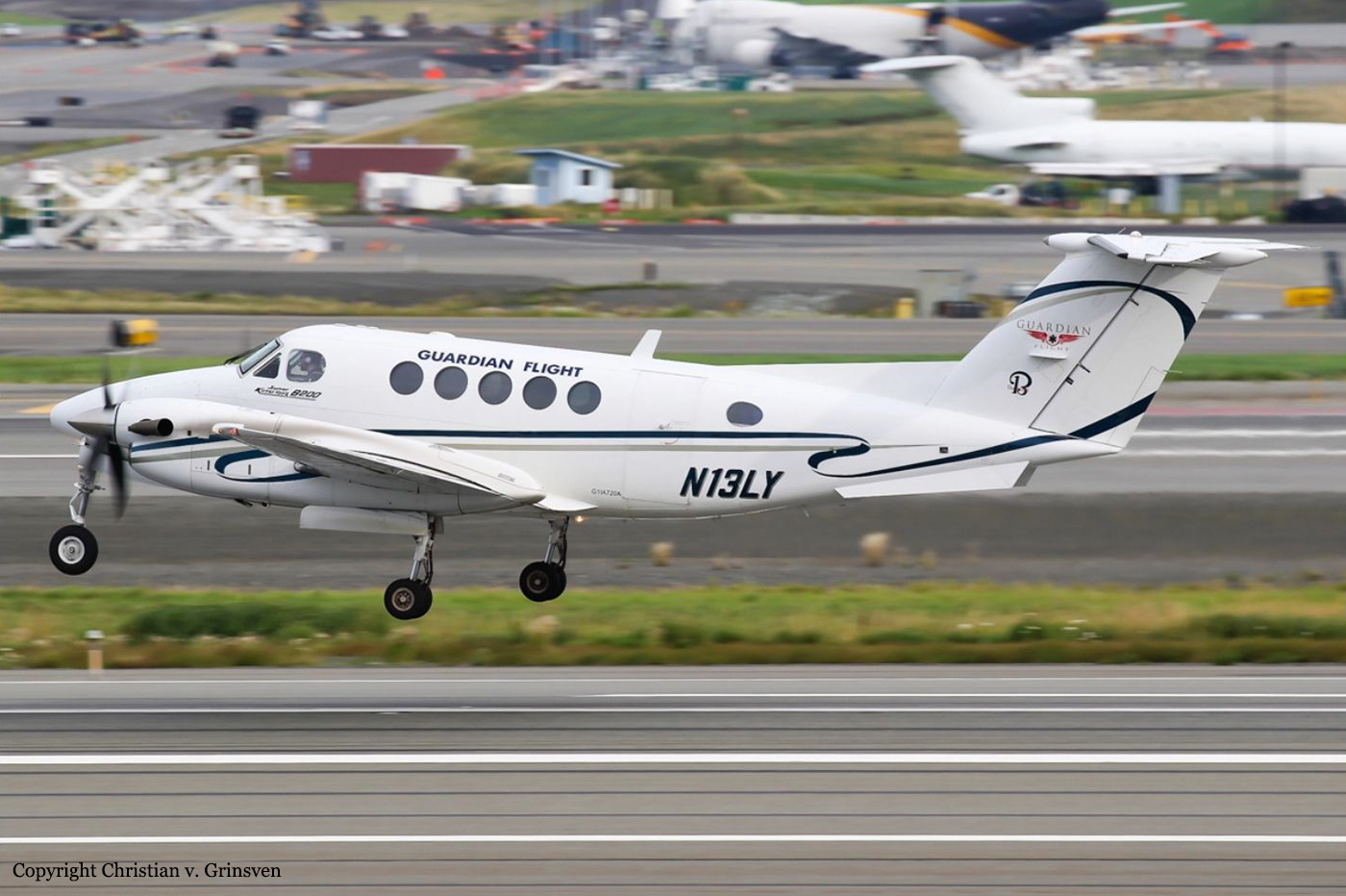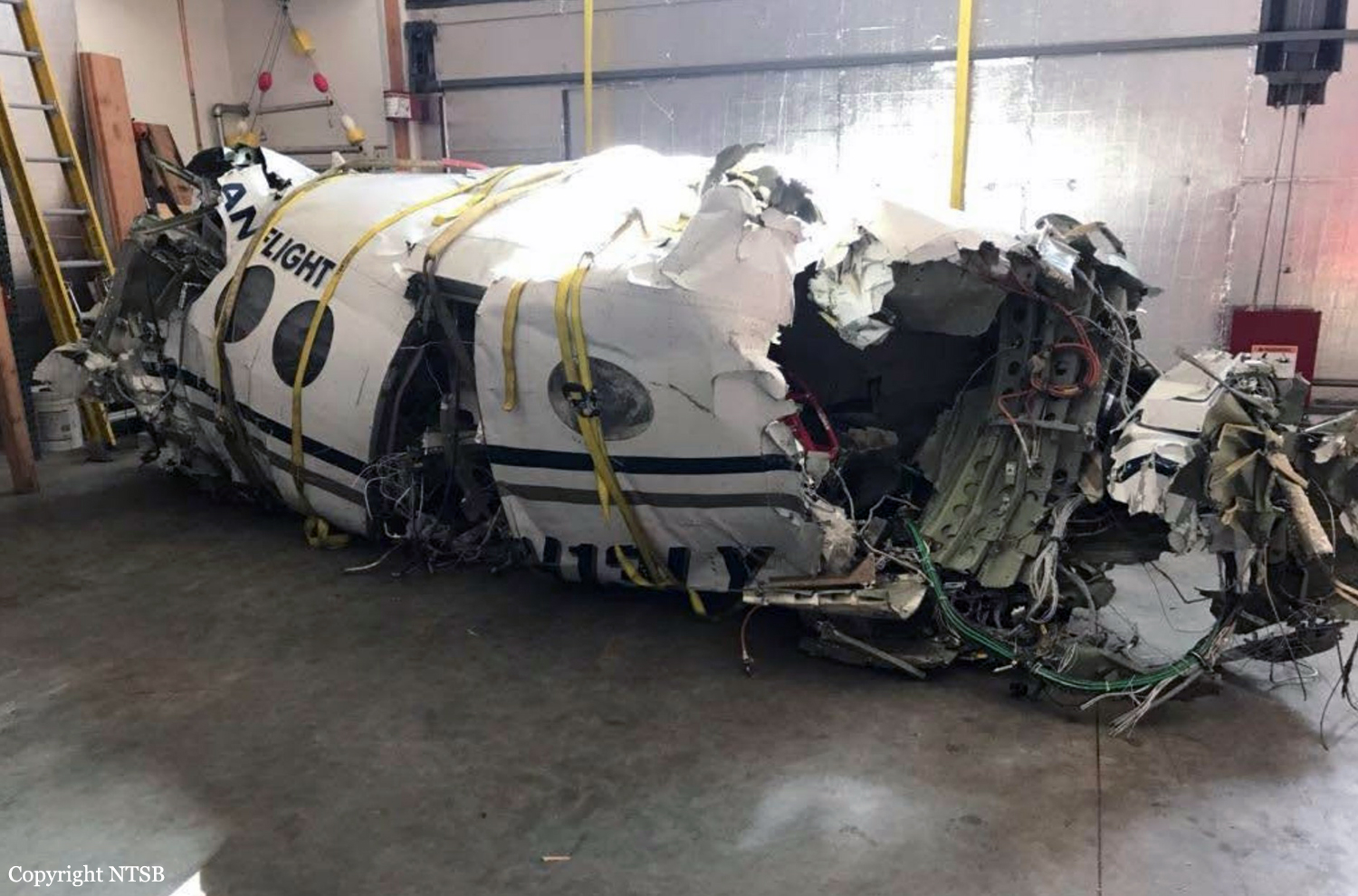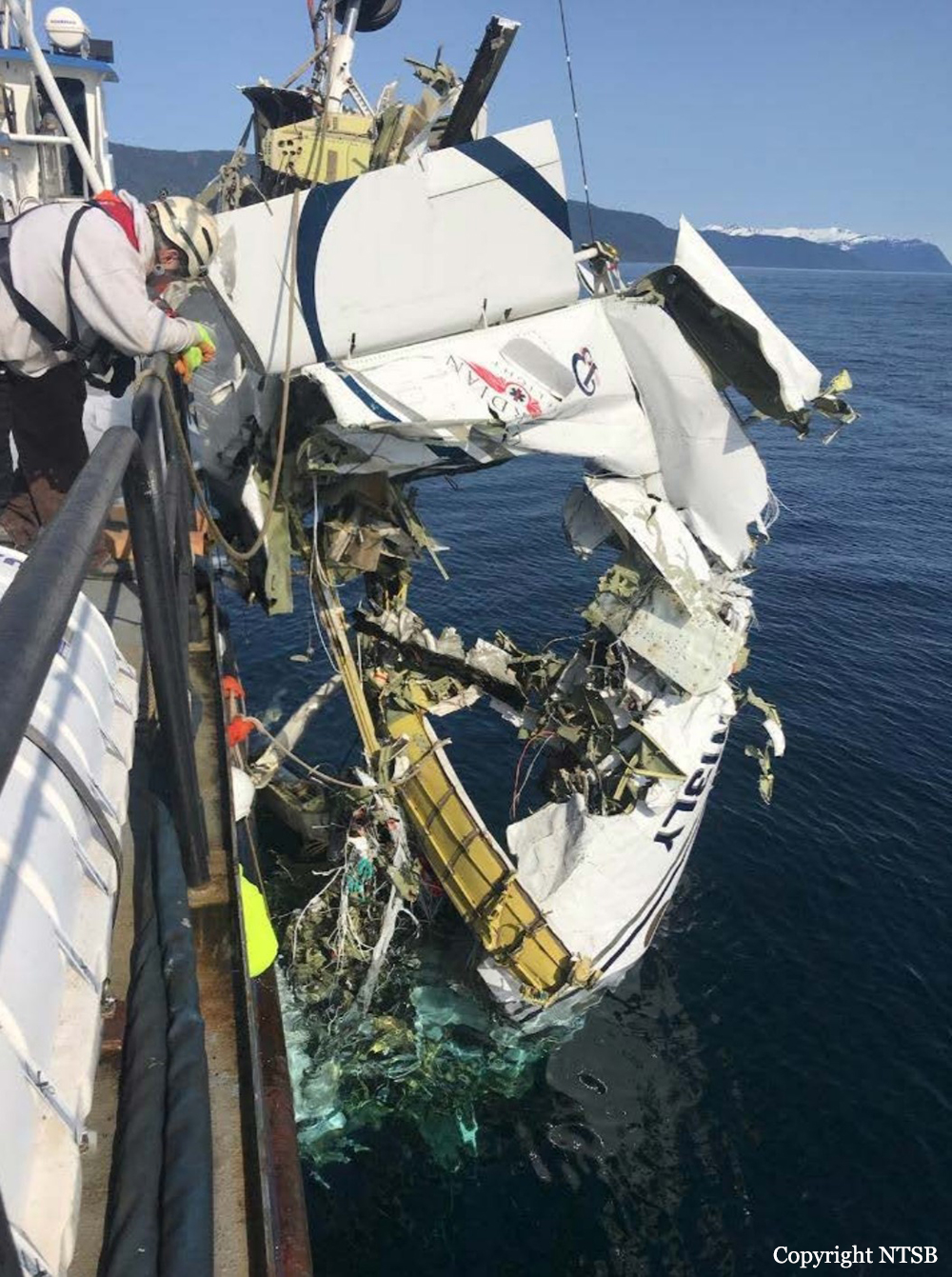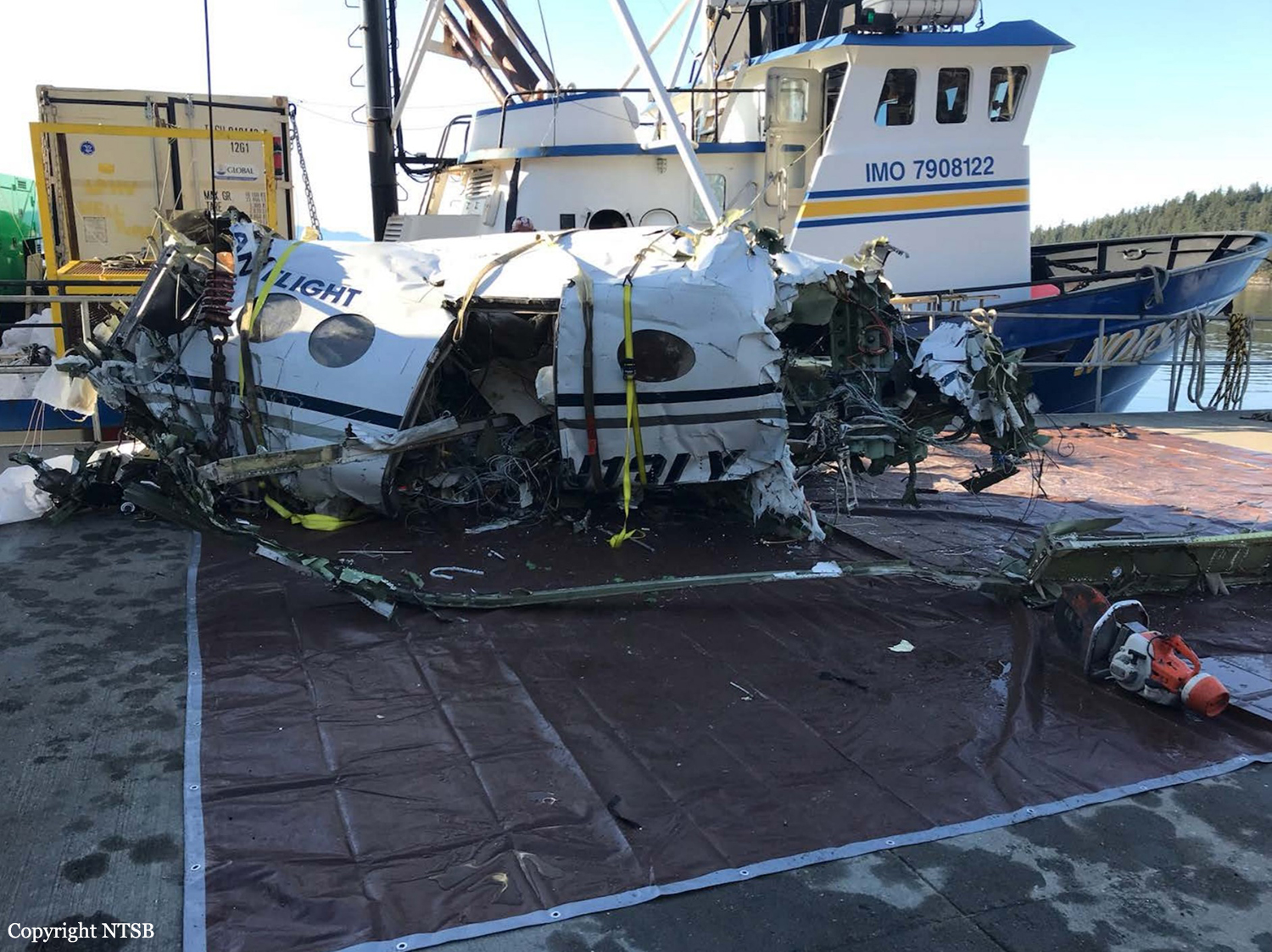Date & Time:
Jan 29, 2019 at 1811 LT
Type of aircraft:
Beechcraft 200 Super King Air
Registration:
N13LY
Flight Phase:
Landing (descent or approach)
Flight Type:
Ambulance
Survivors:
No
Site:
Lake, Sea, Ocean, River
Schedule:
Anchorage - Kake
MSN:
BB-1718
YOM:
2000
Country:
United States of America
Region:
North America
Crew on board:
1
Crew fatalities:
1
Pax on board:
2
Pax fatalities:
2
Other fatalities:
0
Total fatalities:
3
Captain / Total hours on type:
1644
Aircraft flight hours:
5226
Circumstances:
The pilot of the medical transport flight had been cleared by the air traffic controller for the instrument approach and told by ATC to change to the advisory frequency, which the pilot acknowledged. After crossing the initial approach fix on the RNAV approach, the airplane began a gradual descent and continued northeast towards the intermediate fix. Before reaching the intermediate fix, the airplane entered a right turn and began a rapid descent, losing about 2,575 ft of altitude in 14 seconds; radar returns were then lost. A witness at the destination airport, who was scheduled to meet the accident airplane, observed the pilot-controlled runway lights illuminate. When the airplane failed to arrive, she contacted the company to inquire about the overdue airplane. The following day, debris was found floating on the surface of the ocean. About 48 days later, after an extensive underwater search, the heavily fragmented wreckage was located on the ocean floor at a depth of about 500 ft. A postaccident examination of the engines revealed contact signatures consistent with the engines developing power at the time of impact and no evidence of mechanical malfunctions or failures that would have precluded normal operation. A postaccident examination of the airframe revealed about a 10° asymmetric flap condition; however, significant impact damage was present to the flap actuator flex drive cables and flap actuators, indicating the flap actuator measurements were likely not a reliable source of preimpact flap settings. In addition, it is unlikely that a 10° asymmetric flap condition would result in a loss of control. The airplane was equipped with a total of 5 seats and 5 restraints. Of the three restraints recovered, none were buckled. The unbuckled restraints could suggest an emergency that required crewmembers to be up and moving about the cabin; however, the reason for the unbuckled restraints could not be confirmed. While the known circumstances of the accident are consistent with a loss of control event, the factual information available was limited because the wreckage in its entirety was not recovered, the CVR recording did not contain the accident flight, no non-volatile memory was recovered from the accident airplane, and no autopsy or toxicology of the pilot could be performed; therefore, the reason for the loss of control could not be determined. Due to the limited factual information that was available, without a working CVR there is little we know about this accident.
Probable cause:
A loss of control for reasons that could not be determined based on the available information.
Final Report:
N13LY.pdf1.42 MB










